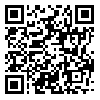BibTeX | RIS | EndNote | Medlars | ProCite | Reference Manager | RefWorks
Send citation to:
URL: http://rangelandsrm.ir/article-1-146-en.html
The science of assessing rangelands is changing as concepts and protocols continue to evolve. Recently, the ecological status concept is currently used by most range professionals as the basis for inventory and assessment. Qualitative assessments of rangeland health provide land managers and technical assistance specialists with a good tool to communicate with the public. The current study investigates efficiency of rangeland inventory with rangeland health method. In this method, 17 indicators were used to assess 3 ecosystem attributes (soil and site stability, hydrologic function, and biotic integrity). Thus, 3 sites with 1464.1 ha included long term exclosure (5years exclosure and refrence site), mid term exclosure (moderate grazing intensity) and overgrazed sites were selected in Goud Jashir of Sepidan, Fars. The results showed that soil stability and hydrologic function were in moderate category and biotic integrity was in moderate to extreme category in mid- term explosure. In overgrazed region, the measured characteristics were categorized as "at risk" comparing with the reference area. Also, indicators such as invasive plants, plant mortality, plant functional/structural groups, soil resistance to erosion and soil compaction were identified as the main factors for rangeland health assessment in the study areas. In other studies the presence of invader plants, soil parameters such as bare soil and stability, species diversity and plant functional/structural groups were reported as the most important indicators in rangeland health assessment.
Received: 2015/06/27 | Accepted: 2015/06/27 | Published: 2015/06/27
| Rights and permissions | |
 |
This work is licensed under a Creative Commons Attribution-NonCommercial 4.0 International License. |




